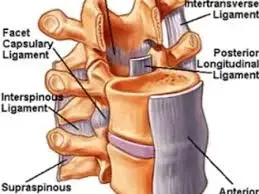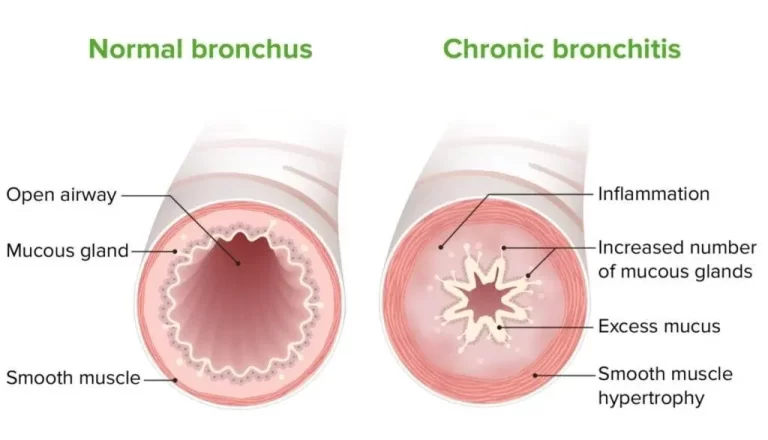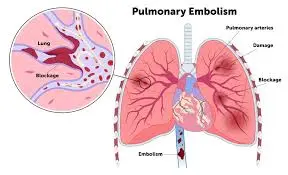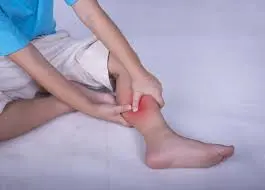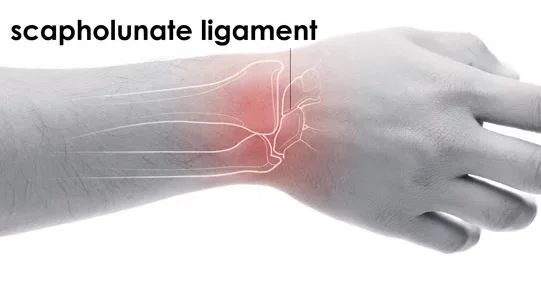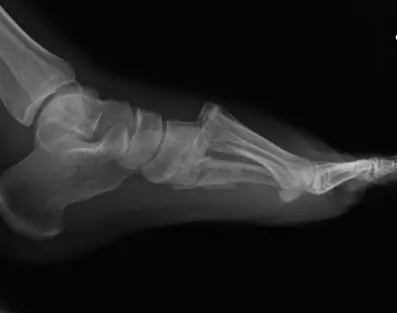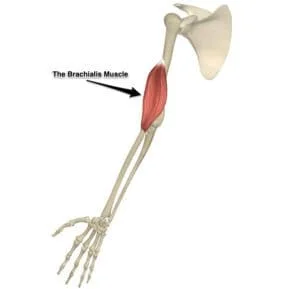Supraspinous Ligament Sprain
Introduction:
A supraspinous ligament sprain is an injury to the ligament that runs along the tips of the spinous processes of the vertebrae, primarily in the thoracic and lumbar spine.
An injury to the supraspinous ligament, a crucial connective tissue that extends along the spine from the seventh cervical vertebra (C7) to the sacrum, is referred to as a supraspinous ligament sprain. By joining the spinous processes of the vertebrae, this ligament is essential to maintaining the stability of the spine.
Trauma, abrupt motions, or repeated strain on the back can all result in this condition. Localized pain, stiffness, limited range of motion, and pain that gets worse as you bend or twist your torso are common symptoms. Rest, ice, anti-inflammatory drugs, physical therapy, and, in more extreme situations, braces or surgery are usually part of the treatment.
The apices of the spinous processes from the seventh cervical vertebra to the third or fourth lumbar vertebrae are joined by a robust fibrous cord known as the supraspinous ligament or supraspinal ligament.
Anatomy of Supraspinous Ligament Sprain:
- Origin: The C7 vertebra is where it comes from.
- Sacrum Insertion/Terminates
- Only the upper lumbar area has a well-developed supraspinous ligament, which may end at L3, however, L4 seems to be the most typical location.
- The ligament’s innermost fibers connect the spinous processes of nearby vertebrae, whereas the most superficial fibers span three or four vertebrae. The deeper-seated fibers cross between two or three vertebrae.
- It is connected with the interspinal ligaments between the spinous processes. The dorsal layer of the thoracolumbar fascia merges with the middle fibers of the supraspinous ligament.
Causes of Supraspinous Ligament Sprain:
The most common causes of a supraspinous ligament sprain are abrupt trauma, repetitive strain, or bad posture. Typical reasons include:
- Whiplash injuries: These quick jerking motions can overstretch or tear the ligament and are frequently caused by auto accidents.
- Heavy lifting: Improper lifting techniques might cause the ligaments in the spine to be overly stressed.
- Sports injuries: Sprains can result from high-impact sports or activities that require abrupt twisting motions, such as weightlifting, football, or gymnastics.
- Bad posture: The ligament might become weaker and more prone to strain if you have bad posture all the time, such as slouching or hunching over.
- Overuse: The supraspinous ligament may become overstretched as a result of frequent bending, twisting, or lifting without enough rest.
- Age-related degeneration: As people age, their tissues and ligaments naturally lose part of their power and flexibility, which makes sprains more likely.
Symptoms of Supraspinous Ligament Sprain:
A supraspinous ligament sprain usually manifests as the following symptoms:
- Localized pain: Back pain that gets worse when you move or apply pressure, especially in the upper back or neck.
- Stiffness: Pain and inflammation cause the back to become less flexible and more difficult to bend or twist.
- Tenderness: Sensitivity to pressure, particularly along the spinous processes, in the affected area.
- Swelling: Inflammation-induced mild to moderate edema surrounding the ligament location.
- Muscle spasms: The surrounding muscles tighten or cramp in reaction to the injury.
- Pain with activity: Activity-related pain is discomfort that gets worse when lifting, turning, or sitting for extended periods of time.
- Reduced range of motion: Pain and stiffness make it difficult to move the neck or back fully.
Risk Factors of Supraspinous Ligament Sprain:
The following risk factors can make a supraspinous ligament sprain more likely to occur:
- Age: The risk of sprains increases as people age because their ligaments become less flexible and more prone to injury.
- Bad posture: The supraspinous ligament may become more stressed and more susceptible as a result of long-term slouching or incorrect spinal alignment.
- Repetitive motions: If you bend, twist, or lift repeatedly without using the right technique or taking breaks, you risk straining your ligaments.
- Weak muscles: If the muscles that surround the spine are not strong enough, they may not provide as much support, which puts additional strain on the ligament.
- Past injuries: The supraspinous ligament may become weaker due to a history of neck or back injuries, increasing the risk of sprains in the future.
- High-impact sports: Sports involving abrupt, violent movements or collisions, such as football, rugby, and gymnastics, might raise the risk of ligament injury.
- Heavy lifting: Inappropriate body mechanics or inappropriate lifting techniques might cause ligament and spine strain.
- Sedentary lifestyle: Insufficient exercise can weaken ligaments and muscles, making physical activities more likely to cause injury.
Diagnosis:
Imaging tests and clinical assessment are usually used in conjunction to diagnose a supraspinous ligament strain. In order to determine the patient’s range of motion, check for spine pain or swelling, and measure the patient’s pain reaction to specific movements. Inquiries concerning recent trauma, repeated activities, or posture-related problems that might have worse the injury may also be made by the healthcare provider.
Imaging methods like X-rays or MRI scans can occasionally be used to determine the degree of ligament injury and rule out other problems like fractures or herniated discs. When it comes to seeing soft tissue problems like ligament sprains, MRI is especially helpful.
Special Test:
Assessing the ligament’s integrity and ruling out other possible causes of pain or dysfunction are the main goals of specialized tests for supraspinous ligament sprains. Typical tests consist of:
- Spurling’s Test: In this test, a downward force is administered while the patient’s neck is stretched and rotated toward the side of pain. While pain that is restricted to the upper back may indicate ligament strain, pain or discomfort that radiates down the arm may indicate involvement of the nerve roots.
- Palpation: Localized soreness and inflammation, which are suggestive of a ligament sprain, can be found by directly palpating the supraspinous ligament and its surrounding regions.
- Compression and Distraction Tests: Because it puts more strain on the ligament, gently compressing and distracting the cervical spine may indicate sprain-related pain.
These tests aid in identifying the presence of a supraspinous ligament sprain and distinguishing it from other disorders when used in conjunction with a physical examination and medical history.
Treatment of Supraspinous Ligament Sprain:
A variety of conservative techniques are usually used to treat a supraspinous ligament sprain with the goals of minimizing pain, encouraging healing, and regaining function. The R.I.C.E. approach (Rest, Ice, Compression, Elevation) is frequently used in initial treatment to assist control pain and inflammation.
To reduce pain and swelling, take over-the-counter anti-inflammatory drugs such as acetaminophen or ibuprofen. In more extreme situations, the spine may be stabilized and additional strain may be avoided with the use of a brace or support. Corticosteroid injections or, in rare instances, surgery may be considered for severe or persistent sprains. A complete healing depends on regular rest, avoiding activities that worse the injury, and progressively increasing mobility as symptoms subside.
Prevention of Supraspinous Ligament Sprain:
To prevent undue strain on the back, it is crucial to maintain proper posture, particularly when sitting or standing for extended periods. When carrying big goods, it’s important to use proper lifting techniques, such as bending at the knees rather than the back.
Maintaining flexibility and avoiding overstretching the ligaments can be achieved by stretching both before and after physical activity. Additional ways to lessen strain include taking breaks, avoiding repetitive strain on the spine, and implementing ergonomically sound work practices.
Lastly, overstretching or injury to the supraspinous ligament can be avoided by avoiding sudden, powerful movements and progressively increasing the intensity of physical activity.
Complications:
If a supraspinous ligament sprain is not appropriately treated or if the ligament is subjected to repetitive stress, complications may arise. Long-term pain and trouble carrying out daily tasks might result from the development of chronic pain and stiffness.
It may be difficult to move the neck or back due to limited range of motion if the injury is severe or untreated. Because the surrounding muscles might not be working at their best, this can potentially lead to muscle weakening or imbalance. Untreated sprains can occasionally result in degenerative changes to the spine, raising the risk of diseases like arthritis or herniated discs. Furthermore, surgical intervention may be necessary to repair the injury if the ligament or surrounding structures sustain considerable damage.
Prognosis:
With the right care and treatment, a supraspinous ligament injury usually has a good prognosis. The majority of people recover completely in a few weeks to months, depending on how serious their injuries were.
Conservative measures, including rest, physical therapy, and pain management, usually work effectively for mild to moderate sprains. The ligament can heal without long-term issues with the right rehabilitation. More serious sprains, on the other hand, can take longer to recover and might call for extra treatments like corticosteroid injections or, in extreme circumstances, surgery.
To avoid re-injury, it is essential to follow rehabilitation exercises and make lifestyle changes, including improving posture and building stronger back muscles. Although the prognosis is generally good, recovery times can differ depending on the severity of the injury and how well the treatment works.
Conclusion:
In summary, Trauma, repetitive motions, bad posture, or incorrect lifting techniques can all contribute to it. Pain, stiffness, edema, and restricted range of motion are common symptoms. For a full recovery, early diagnosis and adequate treatment, such as physical therapy, rest, and pain management, are essential. Most people recover well with the right care, but in extreme circumstances, further procedures can be necessary. Future sprain risk can be decreased by employing preventative techniques such as optimal body mechanics, spine strengthening, and excellent posture.
FAQs
What stops the supraspinous ligament from forming?
The supraspinous ligament prevents the spine’s hyperflexion and keeps the spinous processes from separating during flexion. Together with other spinal column ligaments, it also aids in keeping the head in an upright posture.
What differentiates the interspinous ligament from the supraspinous ligament?
In the thoracic area, the supraspinous ligament is a thin membrane. It is only more clearly delineated at the thoracolumbar junction.
What signs of supraspinous ligament disease are present?
A sprain of the supraspinous ligament results in a limited gait and acute onset back pain that is frequently accompanied by regional thickening and palpable sensitivity.
What motion is restricted by the supraspinous ligament?
The anterior longitudinal ligament restricts extension, the interspinous and supraspinous ligaments restrict spinal flexion, and the intertransverse ligaments, despite their thinness and fragility, are always present and seem to restrict rotation and lateral bending.
Is it appropriate to massage a sprained back?
Whether you have sprains, strains, or tendinitis, getting a massage is crucial. To make up for the lack of use of the injured muscle, we often abuse or misuse other muscles. Future injuries in other locations could result from this.
Can someone who has a sprained back walk?
Pain management techniques like resting and minimizing walking are necessary for the proper management of a thrown out back and back muscular strain.
Can you sprain your back’s ligaments?
Ligaments, the strong bands of tissue that hold bones together, can tear away from their attachments and result in lumbar sprains. Either a sudden injury or steady overuse can cause either of these.
How much time does it take to recover from a sprained ligament?
The length of time it takes for a ligament sprain to recover varies significantly based on how severe the injury is. While more severe Grade 3 sprains, which entail a full tear, may take several months to heal, or even longer if surgery is necessary, minor to moderate sprains, also known as Grade 1 or 2 sprains, can heal in a few weeks to a few months.
References
- Patel, D. (2023f, July 29). Spinal ligament – anatomy, structure, function. Samarpan Physiotherapy Clinic. https://samarpanphysioclinic.com/spinal-ligament/
- Wikipedia contributors. (2024c, November 13). Supraspinous ligament. Wikipedia. https://en.wikipedia.org/wiki/Supraspinous_ligament
- Gaillard, F., & Federman, D. (2017). Supraspinous ligament injury. Radiopaedia.org. https://doi.org/10.53347/rid-53402
- Faapmr, J. C. M. C. (2024, September 11). Ultrasound-Guided platelet rich plasma to treat a chronic supraspinous ligament injury. The Fascia Institute. https://fasciainstitute.org/prp-supraspinous-ligament/

